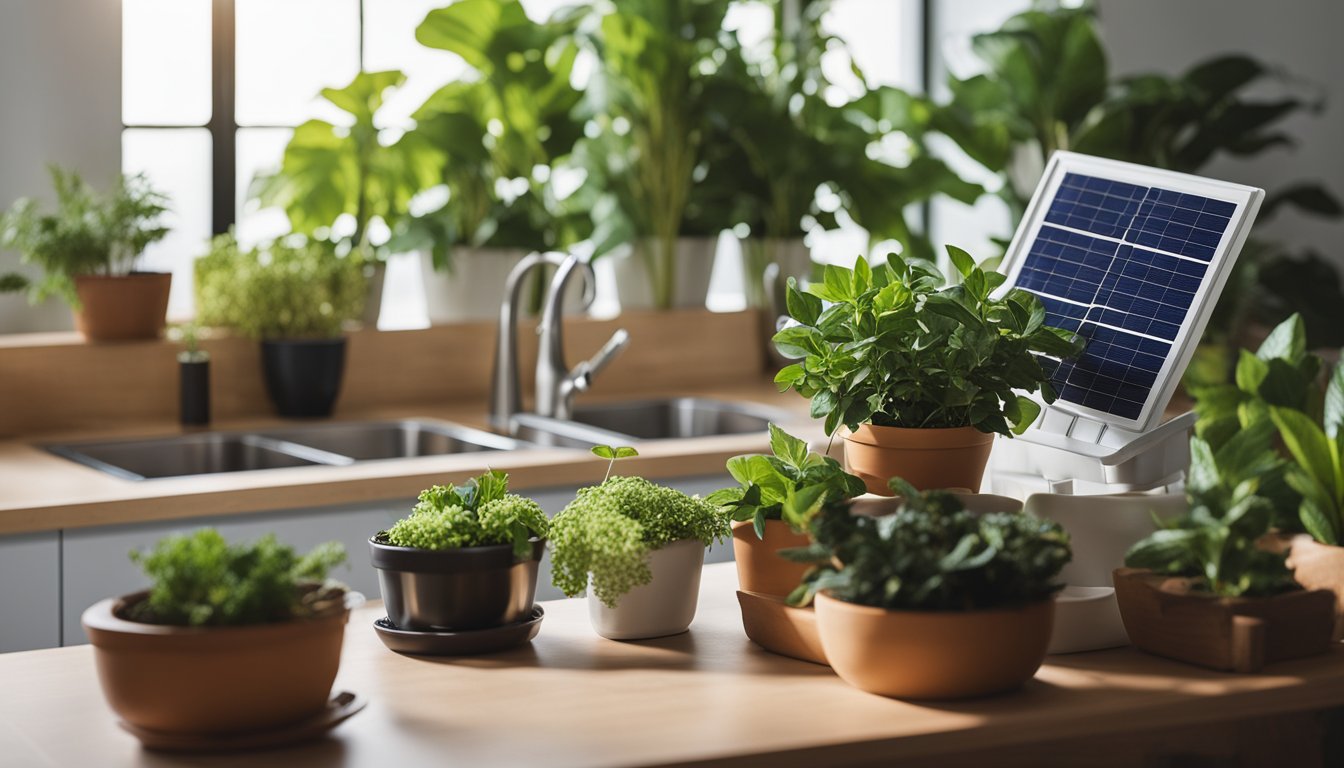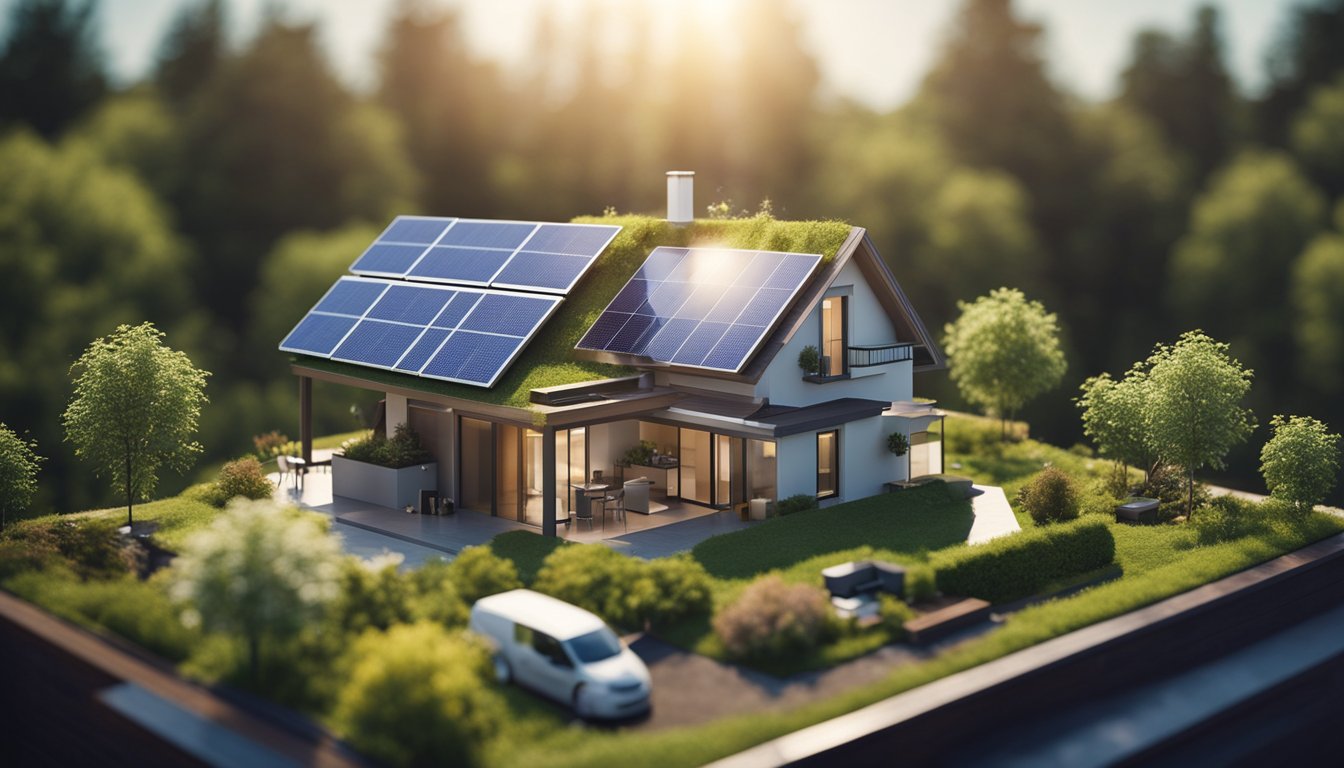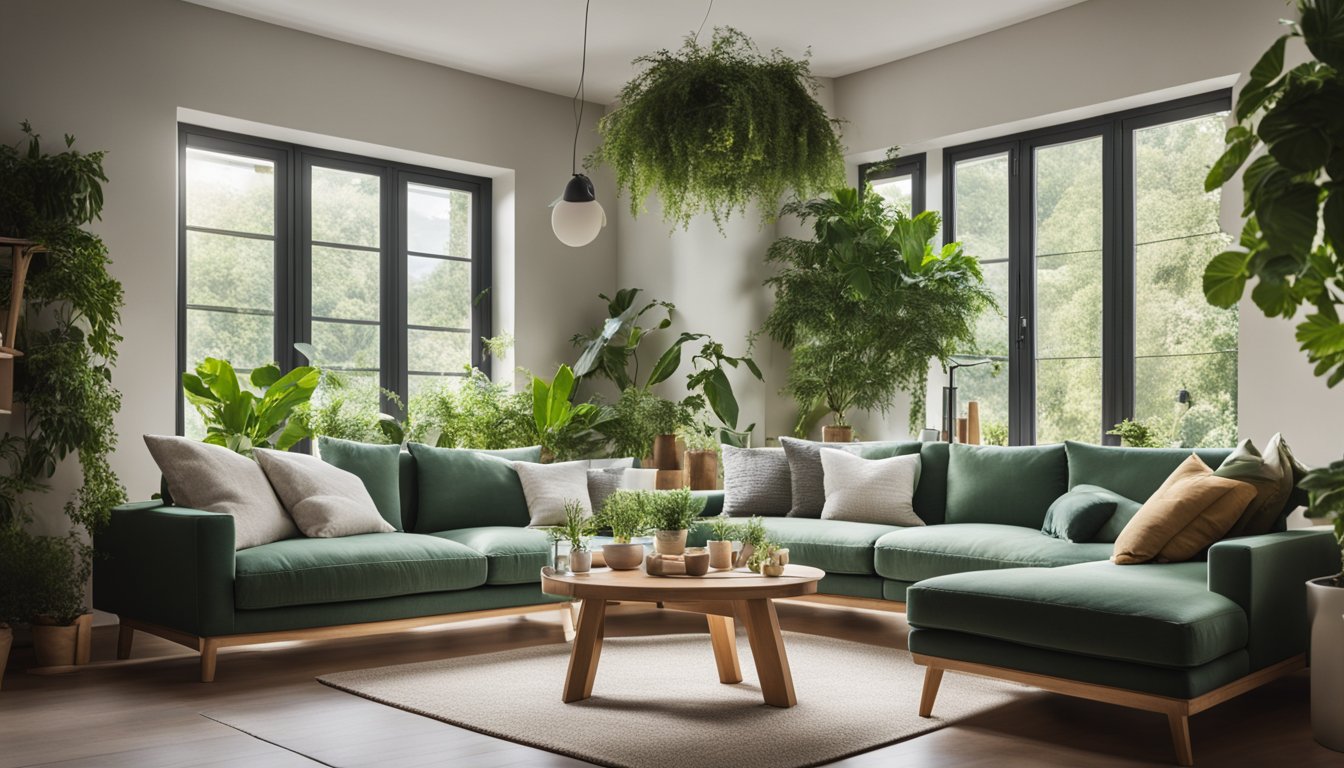Late updated: 21 Feb 2025 14:02
Written by: Daniel Harper
Tips For Sustainable Home Improvements: Eco-Friendly Upgrades Explained
Sustainable home improvements have become essential as concerns about climate change grow. Eco-friendly practices not only benefit the environment but also lead to long-term savings on household expenses. Embracing energy efficiency and renewable energy solutions can significantly reduce your home's carbon footprint and save money on energy bills. Incorporating simple changes like upgrading insulation or installing smart thermostats can contribute to a more sustainable lifestyle.

It's vital we assess our homes to identify areas where energy inefficiencies exist, such as drafty windows or insufficient insulation. Once we're aware of these issues, we can implement changes that enhance our home's sustainability. Practical steps such as choosing energy-efficient appliances and integrating natural elements help transform any house into a greener abode.
Adopting sustainable practices doesn't have to be overwhelming. Our collective efforts can drive the shift to more eco-friendly households, ensuring a better quality of life for ourselves and future generations. With the right approach and a few strategic improvements, creating a sustainable home becomes an achievable goal.
Key Takeaways
- Embrace energy efficiency to cut costs and reduce emissions.
- Assess and address home energy inefficiencies for improvement.
- Easy steps can transform any home into an eco-friendly space.
Fundamentals of Sustainable Home Improvement
At the core of sustainable home improvement, we focus on maximising energy efficiency through proper assessment and upgrades. Using the right materials and systems not only enhances comfort but also reduces our carbon footprint and energy bills.
Assessing the Current Home Environment
Before diving into eco-friendly home improvements, conducting a home energy audit forms a crucial first step. By evaluating energy demands accurately, we identify areas where energy loss occurs most, such as through poorly insulated windows or doors. The audit helps us understand our home’s thermal performance, guiding us in making informed decisions on which improvements are priority.
A comprehensive assessment addresses both visible and hidden issues, ensuring no stone is left unturned. This step sets the stage for effective sustainable renovations, allowing us to measure the impact of subsequent enhancements.
Improving Home Insulation
Proper insulation is a fundamental aspect of reducing energy loss and establishing a sustainably comfortable living environment. Using eco-friendly insulation made from sustainable materials like cellulose or sheep’s wool can greatly enhance thermal performance. This not only maintains a consistent indoor temperature but also minimises the need for excessive heating or cooling.
Installing proper insulation in attics, walls, and floors forms a barrier against external weather conditions. We recommend evaluating current insulation and considering upgrades where materials have degraded or perform below par. This ensures that our efforts contribute effectively to lowering energy demands.
Upgrading to Energy-Efficient Systems
Transitioning to energy-efficient systems is pivotal for sustainable home living. Focusing on Energy Star certified appliances, we embrace technology that reduces energy consumption without sacrificing functionality. Smart thermostats allow us to control heating systems with precision, aligning usage with actual needs and thus avoiding wastage.
We also advocate for installing a tankless water heater, which heats water on demand, saving both energy and space. Such systems not only cut down on electricity usage but also adapt to the dynamics of modern home life. The integration of smart home technology further amplifies our ability to monitor and optimise energy efficiency day by day.
Sustainable Practices and Renewable Energy Solutions

Embracing sustainable home improvements involves integrating renewable energy sources and adopting practices that conserve resources. As we explore renewable solutions, eco-friendly features, and water conservation tactics, it's essential to consider how these methods can be implemented effectively in home renovations to minimise waste and enhance sustainability.
Integrating Renewable Energy
To maximise energy efficiency, solar panels are a top choice for tapping into renewable resources. By installing solar photovoltaic (PV) systems, we can generate electricity directly from sunlight, reducing reliance on non-renewable energy sources.
Solar thermal systems are another viable option, converting sunlight into heat energy. These systems can supply hot water, reducing energy consumption significantly.
For those in colder climates, air source and geothermal heat pumps offer excellent solutions. Air source heat pumps extract heat from the air, while geothermal systems utilise the stable temperatures underground to provide heating and cooling.
The installation of these systems not only contributes to environmental preservation but also leads to long-term savings by reducing energy bills. With correct placement and professional installation, these technologies are invaluable components of a sustainable home.
Eco-Friendly Home Features
Sustainable home designs benefit from incorporating eco-friendly materials and practices. Low-VOC paints contribute to better indoor air quality by reducing harmful emissions, ensuring a healthier living environment.
Green roofs offer a double benefit: they increase a building's insulation and provide a habitat for biodiversity. These living roofs also aid in managing stormwater, which is crucial for sustainable landscaping in urban settings.
Maximising natural light through strategic window placements or skylights reduces the need for artificial lighting during the day and provides a welcoming atmosphere. By selecting sustainable renovations that prioritise these features, we contribute to minimising waste and enhancing the eco-friendliness of our homes.
Water Conservation Tactics
Effective water management starts with the inclusion of water-saving fixtures. Low-flow taps, showerheads, and toilets can substantially cut water use without compromising performance.
Rainwater harvesting systems enable us to collect and store rainwater for non-potable uses like garden watering and toilet flushing. This reduces the demand on municipal water supplies and is an effective way of making sustainable choices for household water usage.
Implementing sustainable landscaping practices, such as choosing drought-resistant plants, can further conserve water and reduce the need for irrigation. By taking these steps, we ensure that our home improvements not only benefit our immediate environment but also contribute to global sustainability efforts.
Frequently Asked Questions

In our journey towards sustainable home improvements, we explore practical methods for enhancing energy efficiency, choosing sustainable materials, and ensuring long-term environmental benefits. Let's address some common enquiries.
What methods can I employ to enhance my home's energy efficiency?
To boost energy efficiency, we should consider installing energy-efficient appliances and updating our home's insulation. Switching to LED lighting and using smart thermostats can significantly reduce energy consumption. Solar panels, while an investment, can provide long-term savings and environmental advantages.
Which sustainable materials should be considered for home refurbishments?
Choosing sustainable materials is crucial for eco-friendly improvements. Reclaimed wood and bamboo offer renewable options, while recycled metal and glass reduce environmental impact. Low-VOC paints and natural fibres like wool or cotton can improve indoor air quality.
How can water conservation be integrated into home improvement practices?
We can promote water conservation by installing low-flow taps and dual-flush toilets. Rainwater collection systems provide water for non-potable uses like gardening. Xeriscaping, which uses drought-resistant plants, can also reduce water usage in landscaping projects.
What are the best strategies for waste reduction during home renovations?
Minimising waste begins with a detailed renovation plan. We should focus on repurposing existing materials and donating unused items. Recycling construction waste such as metals, plastics, and concrete is vital. Choosing materials with minimal packaging also helps cut down on waste.
How can I ensure my home improvement choices contribute to long-term environmental sustainability?
Long-term sustainability can be achieved by investing in durable materials and timeless designs. Energy-efficient upgrades, proper ventilation, and effective insulation play a crucial role. We should prioritise renewable energy solutions and consistently evaluate the environmental impact of our choices.
What are the key elements of a sustainable home design?
A sustainable design encompasses energy-efficient windows, passive solar heating, and natural lighting. It integrates environmentally friendly materials and prioritises air quality. Smart home technology enhances resource management. A thoughtful layout ensures functionality and adaptability for future needs.
